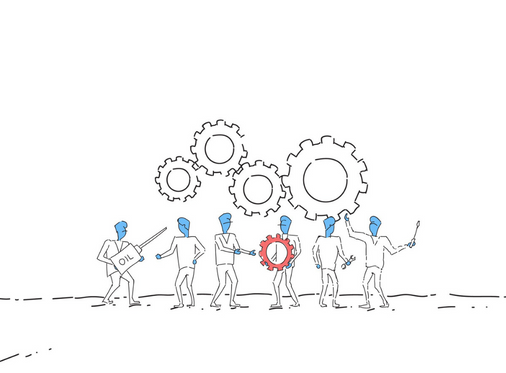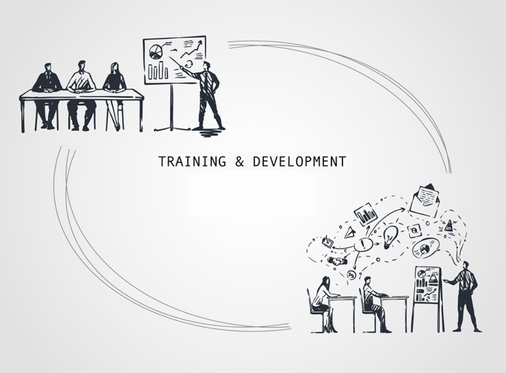

Mistake 1: No Vision & No Strategy
The starting point for any initiative must be a clear vision of what we want to achieve and where we want to be in the future. Organisations that lack a clear vision will not be able to set goals and develop plans that will move the company forward through the lean implementation.
The strategy must develop a roadmap indicating where the implementation will start and how lean will expand throughout the operation. It must assign clear responsibilities with timelines and show the required resources.
The strategy should anticipate obstacles and problems. This is critical to develop ways to handle them and create recovery plans. Organisations need to have the right balance of knowledge and activities at each stage of the implementation to guarantee the overall success of the organisation.


Mistake 2: Lack of Leadership Involvement
When launching the lean implementation, it is essential that top management provide their employees with the initiatives behind it and why it is required. Management must also provide employees with the resources they need.
Leadership behaviour should display characteristics that will nurture the lean philosophy. The culture should be characterised by trust, shared responsibility, and experimentation without the fear of failure. Managers have to inspire and motivate the employees to engage in continuous improvement activities.
Managers must train themselves to be patient and nurture the employees skills in generating ideas and ways to solve problems. Management adopting the right roles and behaviours in the lean implementation lead to commitment from employees, open and honest dialogue, and an increase in employees participation in the business.


Mistake 3: Limiting the scope of Lean
When organisations embark on a lean implementation, the scope must include every single department and function in the organisation. There must be a clear strategy on how lean will be introduced, explained and implemented across all types of jobs and hierarchical levels in the organisation.
A very common misconception is that lean applies only to manufacturing type jobs or repetitive jobs. One of the very common mistakes is limiting lean to the shop-floor activities and what operators do, not including managers and supporting functions.
Lean implementation can be seen as a project that needs to be completed before starting the next new thing. It can also be limited to the implementation of the tools only.


Mistake 4: Rely upon few experts/ specialised members
Successful lean implementation involves everyone, particularly those closest to the process. Operators, nurses, customer facing employees have the most knowledge of their processes, and can provide valuable information on how the lean changes can succeed. It is important to set in place systems to develop people who challenge, think, and continuously improve processes and products.
Relying on experts can have advantages, such as the fact that someone is bringing their knowledge and experience and can help implement lean. However, the implementation cannot rely only on few people, a critical mass of knowledgeable personnel is required for spreading the knowledge and help cascade the implementation to the whole company.
The lean implementation must establish a people and team-based environment. This includes establishing guidelines for behavioural expectations, vision, and organisational leadership and management principles.


Mistake 5: Missing the People Element (Culture Building)
One of the most overlooked aspects while implementing lean is the cultural side – changing habits, ways of working, and belief systems. A culture needs to be created where everyone in the business can see and embrace process and product improvement. Management must seek to develop an eco-system where people question the way things are done and share their ideas for their operations improvements to self-regulate to work more effectively.
Kaizen culture emerges as a result of peoples’ intelligence and energy. It is important to set in place systems to develop people who challenge, think, and continuously improve processes and products.
To achieve high utilisation of people in a lean implementation (kaizen culture), psychological flow needs to be created. To create this flow the skills must match the activity, have focused attention, set clear goals, receive immediate feedback, have a sense of control, and be free from external concerns. This flow creates a cycle where the individual experiences pleasure worth repeating. They then participate and carry out kaizen activities for their own intrinsic reward.


Mistake 6: One Size Fits All (Copying Others)
Lean systems increase value to the customer, improve quality, enhance morale, and decrease cost. This leads organisations and managers into wanting to “carbon copy” lean systems of other successful lean enterprises. As a result organisations fail to continue developing long-term improvements.
To start building your own lean system you must have a deep understanding of your current situation, the future state you want to achieve and the tools.
The journey to develop and design the lean system will not be void of fault or difficulty. This can be a central reason why managers resort to carbon-copying. Designing and implementing the lean system takes plenty of hard work and commitment, especially in its early stages. It is unquestionably a learning experience, and the system will undergo many changes. As long as the principles are taught, followed and measured, the lean system will thrive.
What you learn from developing your own system will be twice as valuable as anything learned elsewhere. The reason is that it already fits or is inherent within your processes and systems.


Mistake 7: Thinking There is an End
Lean is a continual journey that does not end. It’s not an event or a project. Thinking that there is an end to the lean journey will only lead to stagnation and even relapsing.
Improvement activities tend to stop immediately once projects are finish in companies that implement lean as projects. Even worse, the gains made during the projects quickly start to disappear. This has the effect of people believing that lean does not work.
The lean implementation has to embed the Deming cycle (Plan, Do, Check, Act) into the daily routine to improve the workplace. The three kaizen features that Brunet and New (2003) highlight are continuous (never-ending), incremental in nature and the involvement of the workforce.
Lean mustn’t be boxed into a project framework. Lean is everlasting, even when past goals have been achieved you can still look up ways to do more. The end is far from near when continuous improvement efforts are really well orientated and the status quo is challenged on a daily basis.
What you learn from developing your own system will be twice as valuable as anything learned elsewhere. The reason is that it already fits or is inherent within your processes and systems.


Mistake 8: Lack of Knowledge, Understanding & Skill
Must start with Lean Training for senior leaders and managers in Lean fundamentals. This will enable them to facilitate project work and drive initiatives within their organisation.
It is essential to develop specialised training programs for core-skilled workers to enhance their understanding and skills. The training programs need to have the right content, level, and depth for every stage of the implementation. Although training develops employee skills, the focus must be on-the-job training (OJT). The approach of building the complexity of experiments needs aligning with the trainee’s skills.
Whilst Structuring the training process, companies should consider the educational effect. They need to think about human relations in the workplace (Saruta, 2006). The advantage of mentors and teachers is a duel educational opportunity. It provides the mentors with a new learning experience, as they give advice and instructions; and, a new learning curve for the skilled workers to become leaders.
Individuals will not support the implementation if they don’t understand lean. The lack of training and understanding can derail implementation efforts as they encounter unexpected problems or obstacles.

